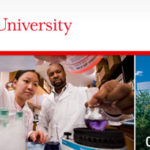By Global News Digest
The current troubles in Thailand are nothing new to that nation. Controversies and government instability are familiar occurrences in Thai politics; and they come not necessarily for bad reasons. Thailand is a constitutional monarchy today, but it was not always so. Before 1932, Siam — as the kingdom was then known — was an absolute monarchy with a government directly under the king’s control. The kingdom weathered the European imperialism and colonialism that swept through Asia and Africa from the 17th to the early 20th century, and emerged with its sovereignty and independence intact. But it also emerged into modernity with an absolute monarchy and an aristocracy eager to protect its privileges against the aspirations of the common people. It took a revolution by the “Promoters” — a group of Western educated intellectuals and military officers who persuaded King Prajadhipok to accept a reduced role in a constitutional monarchy — to bring about change. In fact the king did not fully accept the new changes and was, in 1935, forced to resign in favor of his young nephew, Prince Ananda Mahidol. Since then, there has been a measure of political tension between wealthy conservatives, who always seek greater control over government and are usually aligned with monarchists, and liberals, who want more freedom and rights for the people and are aligned with the rural population and the working class. In 1938 the country’s military ruler, Field Marshal Phibun Songkhram, changed the name of the kingdom from Siam to Thailand. Thailand remained a country controlled by the military from that time until after 1973, when the military introduced a new constitution in 1974 and supervised free elections in 1975. Between 1976 and 1991 there were three military coups and eight governments in Thailand. In 1992 King Bhumibol Adulyadej ended perpetual military rule by installing Anand Panyarachun as interim prime minister. Throughout the 1990s, the government of Thailand was controlled by conservative monarchists. It took the election of Thaksin Shinawatra in 2001 to bring about a change of direction for Thailand. However, the rich conservatives and educated middle class, who had held control before that, have resisted that change. They feel their privileges threatened by Thaksin’s genuine care for, and empowerment of, the poor through his government’s policies. And therein lies the roots of the current crisis in the country. To uproot Thaksin and his liberalism, the conservatives employed the services of the People’s Alliance for Democracy (PAD), also known as “Yellow Shirts” because of the color they wore during their anti-Thaksin demonstrations. Yellow in Thailand apparently symbolizes royalty. In 2008 the PAD was used to destabilize the pro-Thaksin government of Prime Minister Samak Sundaravej. Their activities ultimately contributed to the sacking of the last pro-Thaksin government led by Somchai Wongsawat, and the installation of the current prime minister, Abhisit Vejjajiva, of the Democratic party – a party of the conservatives. Since the installation of Abhisit as prime minister in December 2008, the pro-Thaksin group, National United Front for Democracy Against Dictatorship have vowed to agitate and fight until the ‘illegitimate’ Abhisit government is removed and new elections held. Also known as the “Red Shirts”, the UDD has kept up the struggle against the government and its security forces. Since July 2008 the “Red Shirts” and “Yellow Shirts” have clashed repeatedly. Fighting, including one death, between the two protesting groups led the government to impose a one week state of emergency in Bangkok in September 2008. In 2009, the two groups clashed again after Thaksin spoke via video to a UDD rally in March calling for a “peoples’ revolution” and claiming that some members of the Privy Council and ‘Ammatayathipatai’ or aristocracy were responsible for the undemocratic way Abhisit was installed as prime minister. The Red Shirt protests that followed led to cancellation of the Fourth East Asia Summit in Pattaya and the government, once again, imposing a state of emergence in the region on April 11. There was an earlier state of emergency imposed over the capital, Bangkok, as over 100,000 Red Shirt protesters descended on the city on April 8. After the Supreme Court ordered the seizure of $1.4bn of Thaksin’s family assets on February 26, 2010, the government expected major riots by the Red Shirts. The riots never came; instead the Red Shirts announced they would hold a peaceful rally in Bangkok on March 14 to demand new elections. Several days before the rally, government fanned rumors of major terrorist attacks and beefed up security in Bangkok with an addition 50,000 troops. But when the “largest protest in Thai history” finally took place on the appointed day, it was entirely peaceful and without violence. The protests continued into April when PM Abhisit imposed a state of emergency on April 8. By the 10th of April, the protests had turned violent as troops tried to drive protesters from parts of Bangkok where they were camped. The confrontation led to the loss of 25 lives and injuries to more than 800. Since late February, the Red Shirt protesters have camped out in parts of Bangkok, including the commercial district, for more than six weeks, forcing businesses to shut-down and causing millions of dollars in losses. The latest incidents on April 23, in which bombs exploded on a street and in a train station, added one additional death and at least a hundred more wounded to the ongoing crisis, and bringing the total casualties to 26 dead and about 1,000 wounded. Talks between Abhisit’s government and Red Shirt leaders, which have been on-going since Wednesday, April 22, reached a compromise on Friday. The Red Shirts had been demanding an immediate dissolution of the government and call for new elections. The government had been insisting that it needed six months before it could call for new elections. After their talks on Friday, there was optimism that the government would accept a 30-day deadline offered by the protesters instead of the three months it had proposed for calling new elections. Who is Thaksin Shinawatra?The man whose political ambition, to bring change to Thailand and relief to the country’s poor, has ignited the current crisis is a former police officer, who has been described as a “self-made billionaire.” Thaksin Shinawatra made his money in telecommunications and first became prime minister in January 2001, when he and his Thai Rak Thai (Thai Love Thai) Party won a landslide populist victory based on Thaksin’s promise of universal access to healthcare; a 3-year debt moratorium for farmers and 1 million THB (US$31,000) in locally managed development funds for the rural population. The election that brought Thaksin to power has been described as the “most open, corruption-free election in Thai history.” Before Thaksin came to power, economic problems in Thailand had, by 1997, brought about high unemployment in the urban areas, decline in social services and a widening gap between rich and poor. Prime minister Thaksin was able to deliver on his policies and lessen the economic problems in the country. He made funding available to small businesses, provided affordable healthcare to Thais and supported his rural voter-base by making visiting tours, listening to their problems and providing them a measure of relief. But his conservative critics found Thaksin’s style of government threatening and accused him of anti-democratic practices, including limiting freedom of the press, and conducting a brutal war on the illicit drug trade that led to more than 1000 deaths. Still that did not prevent Thaksin from winning an even more decisive victory in the 2005 elections, in which his TRT party won 377 of the 500 seats in Parliament. It was the first time, in Thai politics, that any political party won an outright victory. And yet the conservative opposition remained virulently high. Responding to allegations of corruption and organized demonstrations against his government, Thaksin dissolved parliament and called a snap election in April 2006, but the election was boycotted by the opposition and subsequently annulled by the courts. The conservatives had had enough and institutionally the country began to turn authoritarian. On September 19, 2006, the military pre-empted a scheduled new election and toppled the government of Prime Minister Thaksin who was, at the time, out of the country in New York attending a UN conference. Six days later, the military began investigating him for corruption. Thaksin made Britain his home-in-exile. In June 2007 the government froze the Thaksin family assets. In October 2008, the former prime minister was sentenced in absentia to two years in prison for conflict of interest in a land deal. In February 2010 the Supreme Court ordered the seizure of $1.4bn of the frozen Thaksin’s assets. He and other members of his disbanded TRT party were also banned from politics for five years. The current troubles in the country are a direct result of that coup and later constitutional tinkering. The coup leaders repealed the 1997 Constitution and appointed Surayud Chulanont interim Prime Minister. They gave the country a new constitution, ratified by a national referendum on August 19, 2007. On December 23, 2007 multi-party elections were held under the new constitution. A pro-Thaksin group, the People’s Power Party (PPP) led by Samak Sundaravej, won the election with a plurality of 233 out of 480 seats in contest. Samak took office as prime minister of a coalition government on February 6, 2008 and soon began efforts to amend the 2007 constitution and provide amnesty to former Prime Minister Thaksin and other banned politicians. In response, the opposition, People’s Alliance for Democracy (PAD), started street demonstrations against the constitutional amendment and amnesty efforts of government. The demonstrations grew violent when anti-government groups called “yellow-shirts” clashed with government security agents and pro-government demonstrators. “Yellow-shirt” members occupied Government House from late August until early December. In October, they blockaded parliament and forced the closure of Bangkok’s airport for several days in November and December 2008. Prime minister Samak Sundaravej was forced out of office by a Constitutional Court ruling that he had hosted a televised cooking show — an apparent violation of the Constitution’s conflict of interest provisions! Samak was succeeded by Somchai Wongsawat, another PPP leader and brother-in-law to former P.M., Thaksin. However, Somchai’s prime minister-ship did not last. On December 2, 2008, the Constitutional Court dissolved the PPP and two of its coalition partners for election law violations, paving the way for parliament’s selection of the Democratic Party leader, Abhisit Vejjajiva — a wealthy 44-year-old, whose support comes from the wealthy and educated classes — as the new Prime Minister, on December 15, 2008. Now just as the “Yellow Shirts” harassed pro-Thaksin governments, Abhisit’s government faces serious opposition from the National United Front for Democracy Against Dictatorship — UDD for short. The UDD calls the Abhisit government ‘illegitimate’ for not having been popularly elected but relying on the army and judiciary to gain power. They want an end to the “Ammatayathipatai” insider-politics in which palace insiders — unelected bureaucrats and the military — are able to ignore the popular mandate. They want the 2007 military-drafted Constitution replaced with the 1997 Constitution. UDD Red Shirt” protesters frequently clash with the “Yellow Shirt” PAD demonstrators. The problem in Thailand is really a struggle between two forces that have existed in Thailand since, at least, the early 20th century, when the kingdom started trying to modernize. It is a struggle between traditional authority as represented by the monarchy and its attendant train of bureaucrats and royal hangers-on, accustomed to privilege and determined to protect those privileges; and the rest of the people — the working class and rural dwellers who are mostly poor and eager to gain rights and the freedom to better themselves. The rulers of Thailand successfully negotiated to retain their independence without ever being colonized throughout the period of European imperialism in the 18th and 19th centuries. When the monarchy in other countries of the region, like Laos, were being displaced through revolution, Thailand held on to its own. Revolution came in the form of transformation of an absolute monarchy into a constitutional one. But the fear of losing more privileges has kept the conservative and monarchist ruler-ship of Thailand authoritarian. It is this authoritarianism that the Thaksin group and their “Red Shirt” foot soldiers want to remove from the country’s politics.
|
||
|











